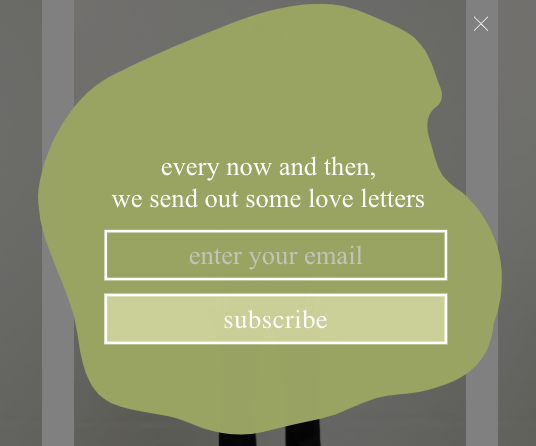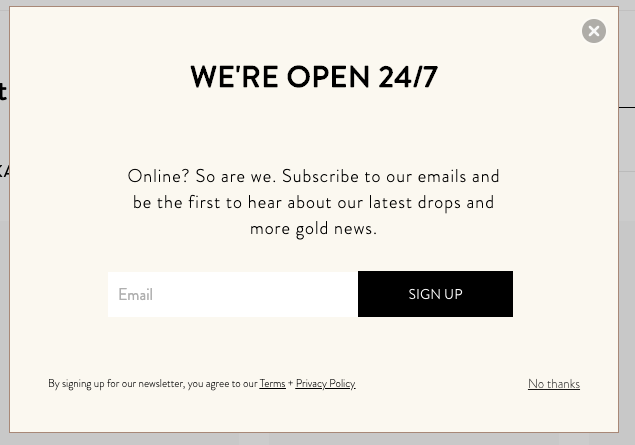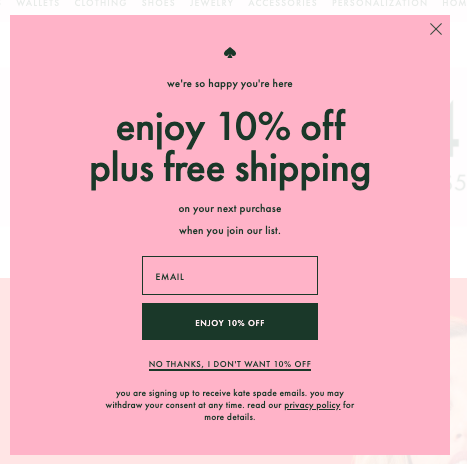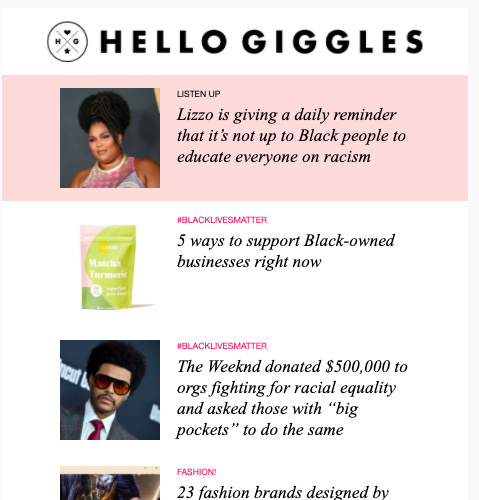7 must-know lessons to create a successful email marketing campaign
- Nitya Pandit
- Jun 3, 2020
- 4 min read
You and even I, a newsletter-obsessed marketer, have many unread emails and only a handful read ones in our Promotions tab on Gmail. Why is that? Why are some emails so appealing that you open them in the first 2 seconds?
To find the answers, I dug through my flooded inbox. Here are 7 lessons that you should use to improve your email marketing campaigns.
1. Unique Pop-Up Window
The first interaction a consumer has with a brand’s email marketing campaign is when she signs up for it on the brand's website. The copy on the pop-up asking for the email ID needs to tempt the audience to take action, instead of ignoring it. I like the one from Bhaane because it isn’t hard selling or monetarily incentivizing, like most pop-ups usually do with the “enjoy 10% off”. Don't get me wrong. Who doesn’t love a discount? While the price-based copy is enticing to many, Bhaane’s pop-up is original and stands out.
First Photo: Bhaane's Pop-up Window
2. Welcome message
So you’ve finally made it into your consumers inbox. Use this digital real estate wisely.
Here are 2 things that I think work well. Outline the benefits and value that the consumer is about to receive now that he/she is going to engage with your brand (see: “my goal is to help you produce…..” below). Secondly, you should have some call to action in the first email. You could add links to direct them to your homepage or the page that describes the loyalty program. Also, very importantly, urge the reader to move your email out of the promotions tab so that it doesn’t get lost in the crowded inbox space.

3. Subject Line and Name
It is obvious that if your subject line is not enticing enough, the reader will not open your email.
Rule of thumb: Don’t use a generic subject line.
For instance, “Treat yourself to something new” (Opentable's subject line) is so open-ended that the email could be from any brand - a clothing, jewelry, or food company. Instead, be direct and concise. Gilt’s email is a great example. The subject line reads: "Valentino Women: All Sandals under $549". The reader from the get-go knows that the email is for women, is about sandals and the price.
Remember that the tone you use needs to match your brand personality. If you're a brand like Cosmopolitan magazine, then you can use emoticons and a friendly, conversational tone in your subject line versus for a bank's email, it would be appropriate to use formal language.
The name used to send out the email maybe considered a trivial detail, but I think there's more to it. For example, emails sent from “BaubleBar”, “Kylie Cosmetics” and “Lumee”, in comparison to “Matt from Later” and “Megan at Freshly”- the latter feels slightly more personal because of the human name.
Additionally, use a consistent series name like “Daily Skimm” or “Today’s Issue” right before the rest of the subject line. While this doesn't guarantee that the reader will click on your email, but after she is repeatedly exposed to it, your brand name will register in her mind every time she sees your email and might finally even click on it after a few days or weeks.
4. Don't sell from the get-go

Educate the consumer about an idea, and then talk about how your service/product fits into the scheme of things. I think Later is a great example. They start the email by outlining the benefits of User Generated Content, and only at the very end pitch their Collect Feature that helps consumers find UGC. In this way, the consumer sees the value you’re adding to their lives.
5. Informative newsletters

Creating fresh content daily/very frequently can be an exhausting task (something I know a thing or 2 about). So in your newsletter, provide links to other content you’re consuming - this way you’re the go-to source of information about your niche for your reader and aren’t spending hours creating new content. Redirecting readers to high quality content that isn't yours show that you're confident that readers will return back to you. On the left, look at AdWeek's “what we’re reading” section if you need inspiration.
6. Plug other channels

I can’t stress this one enough. If your readers enjoy your emails, they will want to engage more and would want to see all the other content you create as well. So, of course, you always have to include your social handles at the bottom of every email, but here's the trick. Redirect them to your older and best performing content that they might not have seen yet. Don't forget to mention your loyalty program. Go a step further by providing additional information like Sephora does. The consumer always knows his/her's most updated loyalty points, status, and the expiry date.

7. Place all the relevant information at the very top of the email
This tip is more important now than ever. India has been on lockdown for months now, with restrictions of online delivery. During this lockdown, Nykaa, in each of its emails, placed the banner “tap here to see if we are servicing your pincode”. The consumer doesn't need to go to the website to find out if delivery is resumed in her area, she can find the information right there, in the email.
When I say post relevant information I also mean that the information should fit the external environment. For instance, the online conversation currently is centered around Black Lives Matter. So make sure that your content respects this global scenario, while staying true to your business. For instance, Hello Giggle, an entertainment and lifestyle website, mentions The Weeknd and Lizzo in its email, but in the context of world affairs.
Overall, I think that the first impression really is the last impression when it comes to email marketing. The consumer might see your email for the first time months after subscribing to it - so every email sent to out is subject to the first impression. Make sure that your first interaction wows the reader so much so that she/he keeps coming back for more.




















Comments